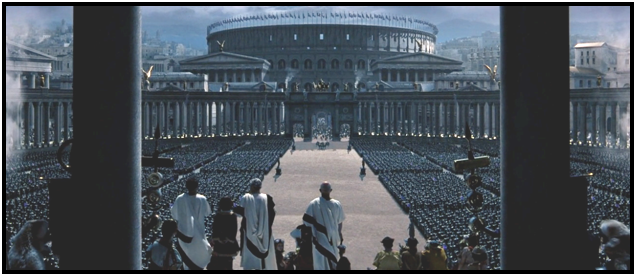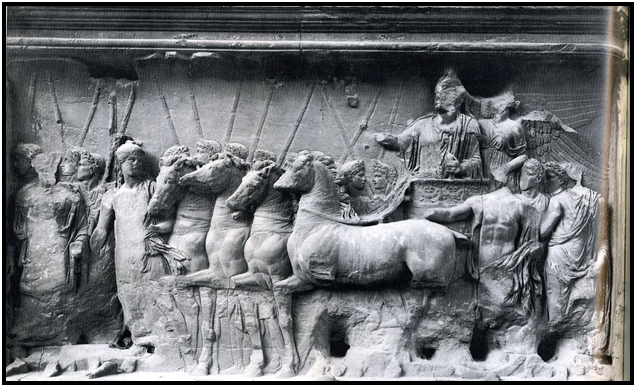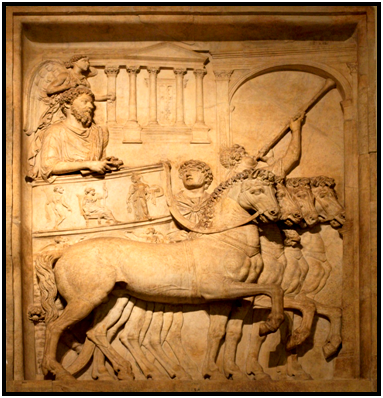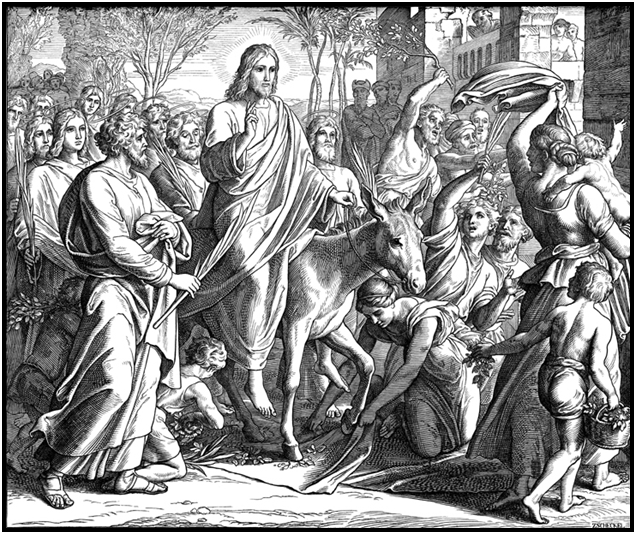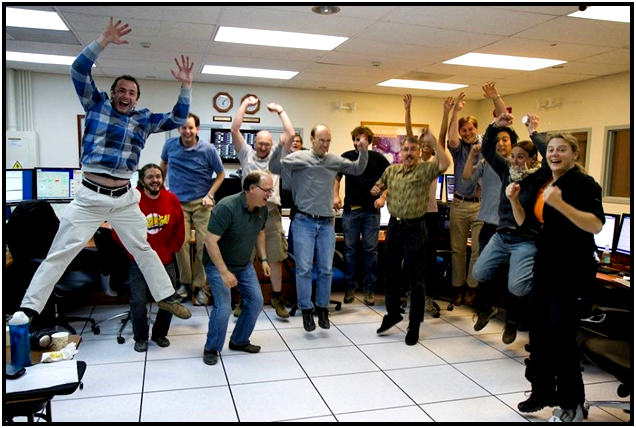ROCKS, WATER, TIGERS, AND MICE
A Sermon Preached by the Rev. Dr. Arthur M. Suggs
On Sunday, March 23, 2014
Moses Strikes Water
We have just heard a reading from Exodus 17. It’s a beloved story, near the middle of the entire Exodus chronicle, in which the children of Israel are wandering in the wilderness, and they begin complaining because they are thirsty. That’s understandable, I suppose. If you were wandering in a desert and with you were women, children, old people, and a lot of baggage, of course you would get thirsty. So Moses strikes the rock at Horeb with his staff, and out comes water. The people are saved once again.
This story works on a number of levels. It works as a basic narrative in that you’ve got a really strong bad guy, the antagonist in the person of the pharaoh, with his people and the army chasing the Israelites. And you’ve got a really good guy in that Moses is powerful. He’s got great connections. But he’s also flawed. It’s a compelling saga that holds your attention and your interest in what happens to the people.
The epic also works beyond basic narrative at the magical level. Supernatural, mysterious things are going on. Moses’ staff will be used to save the people from poisonous snakes, and he used it to free the people from Egypt. You might envision Charlton Heston in his flowing robes holding the staff, or you might picture Gandolph and the way he’s constantly saving the Fellowship with his staff.
Go Deeper, to the Archetype
But I would ask you this morning to go down yet one more layer to the archetypal level. There’s some deep symbolism going on here, the opposites of desert wilderness and water. There’s an old expression of being caught between a rock and a hard place. Well, a desert is a hard place full of rocks. It’s both. It’s hard, it’s dry, it’s unforgiving, and it can be deadly. Traveling through the desert can be dangerous and burdensome. Water is crucially important. It symbolizes the opposite – softness, life, refreshment, coolness, growth – all made possible by water in an unforgiving environment such as a desert.
Coming into this archetypal setting, travelers encounter the opposites of the danger of the dry desert and the need for water to stay alive as they pass through it. In the context of this story and as multiplied by others, we get a take-home message not only from this vignette but also from the whole story of the Exodus: It is that God sees, God hears their complaints and prayers, and God cares. God can solve any problem.
If you’re a bunch of slaves, unarmed, burdened with baggage, cattle, old people, children, and you’re fleeing an army on horseback and in chariots, you’re in quite a pickle. Yet God saw, heard, cared, and delivered them. Saved them by parting the Red Sea, or the Sea of Reeds. Now you are in the desert, and you’re in trouble again. God sees, hears, cares, and delivers the Israelites yet again. Moses, hit that rock with your staff! And out comes water, miraculously.
The take-home message? If God can solve those two dilemmas, God can solve any problem.
Can You Really Take That Message Home?
Hold on just a minute. Is the take-home message really true? Is it believable? Are you convinced? Are you persuaded so far that God solves such problems?
Let me give you four contrary examples:
1. What about a 48-year-old middle manager who lost his job in 2008, right at the beginning of the economic downturn, and has been chronically unemployed or underemployed ever since? About two years after he lost his job, the marriage started to fall apart. They had to sell their car and get a cheaper one. They had to sell their house and move into a less-expensive place. They had two kids, who continued to grow up.
Eventually the marriage dissolved. He still can’t find work, and – this is probably the part that hurts the most – his two kids view him as a loser. Several years have passed, and he’s now in his mid-fifties, that stressful time of trying to find a career-level job. So he gets by on a McJob and his heart is broken. He loved his wife, and he loves his children, all of whom don’t think very much about him.
2. Or what about the parents of a teenager who seems hell-bent on trouble. We’ve all known this kind of teenager. Some kids are like that, rebellious and anti-authority to their very core. Much more interested in drugs, sex, or alcohol, completely at the expense of school and studying. Totally opposed to a job, making some money, saving for college. Wholly against any delayed gratification. The parents are worried, really worried. Deep inside, they’re not sure that this kid is going to be okay, that he’ll end up someplace bad. And they worry.
3. Or fathers of preschool children. Think of a single parent who lost his wife, their mother, to breast cancer while she was in her thirties. I’ve known three of these fathers in my time, all with similar stories. And for all three there is a hardness, a bitterness in their hearts.
4. Finally, consider a case of the second wife. A man marries young, and it’s not a good marriage. It lasts only a few years. Then, after the divorce, he’s single for a time until he meets a new person who is much better-suited for him, a much better marriage. They end up being married for nearly thirty-five years when he has a very sudden heart attack and is gone before anybody knew what had happened. Next, after the funeral when the second wife starts dealing with all the affairs of having lost a husband, she discovers that he never changed his will.
This is one of those old-fashioned families, in which the house was completely in the man’s name. Both cars the same. The investment accounts, the retirement accounts, yes, all in his name. A phone call is made, and the original wife from thirty-five years ago is finally found and informed that she has just inherited quite a bit. I’ve known two of these second wives to whom this has happened. They experienced sadness and bitterness and anger – serious anger that has settled into the hearts and minds and souls of those two women.
Now think about these four examples: a 48-year-old middle manager whose kids think he’s a loser, the parents of a hell-bent teenager, the fathers of preschool children who are suddenly motherless, and two bereaved and bereft second wives. Do you tell these people the story about Moses striking the rock in the wilderness and out comes water? Do you tell them that God can solve any problem? Would you tell them that? Would you look them in the eyes and say, God sees, hears, and cares? God can solve any problem? What would be their response to you?
Now I’ve Painted Myself into a Corner
Which is it? God sees, hears, and cares, can solve any problem? Or is there really an inherent sadness, bitterness, anger in our world? Is there any resolution between these two poles?
Relevant to this predicament, I would like to read you a story. It’s very simple, Zen in nature. For years I have enjoyed reading yarns from two different religious traditions, Hasidic and Zen. Even though I relish them, I’m often disappointed. Sometimes they purport to be deep and meaningful, but I just don’t get it. They may seem rather silly or shallow instead. However, I enjoy reading them, and I came across one that is in my opinion one of the deepest stories I’ve ever come across. It didn’t appear that way to me at first, and it probably won’t seem that way to you at first, either. But once I started looking into the tale, I began to get it. It’s called The Parable of the Strawberry:
A man was wandering in the wilderness when a tiger appeared and began to chase him. Panicked, the man fled and came to the edge of a cliff, with this ferocious tiger on his heels. Spotting a thorny vine rooted on a rock, he swung himself down over the chasm. Above, the tiger roared and pawed at the rock. And then, looking down, he saw the gaping jaws of a second tiger, pacing below him. Apparently these two worked as a team, and he didn’t know it.
Looking up at the first tiger, looking down at the second, the man noticed suddenly a white mouse and a black mouse that had appeared and had begun to gnaw away at the vine. But the man did not care. He no longer paid attention to the two tigers or the two mice for he had found a plump red strawberry growing on the face of the cliff. Holding onto the vine with one hand, he plucked the fruit with the other and popped it into his dry mouth. Oh, how sweet it was.
That’s the end of the story. I came across it in a Zen children’s book, and believe it or not, it’s also a pop-up book. As you open and close the page, you can see the man on the vine with the tiger below jumping up and the tiger above trying to reach down to get him. I’m not sure how advisable this book really is for small children, to be honest with you. Anyway, there it is. An ancient story, well over two millennia old.
Here’s an Interpretation of the Parable
The tigers. The first tiger that began to chase the man represents the problems of your youth, of your childhood, if you remember those times. For example, when you had a crush on one of the other students in class your heart was broken for the first time in your life. Or if you were at all like me, I was a mouthy kid and got myself in trouble. And I got myself beat up or sent to detention multiple times in my school career. Or dealing with your parents, those “stupid” parents every kid has.
The tiger below, into whose jaws the man will fall, represents the problems of your old age. Feebleness, failing memory, all sorts of ways in which your body begins to let you down. Being in the hospital, needing surgery, falling and breaking a hip. Then you can’t remember things, and it seems as though sometimes the only correspondence you get is information about some old friend who has died. Not always golden years for some elderly people.
Then the two mice, one white and one black. There is something typically Zen about the story in that the white mouse represents the good things, but the “good” things that happen to us, according to Zen tradition, aren’t always so good. For example, a man gets a promotion and a raise, and now he is further entrapped by a job that’s not so good for him. But now that he’s got a promotion and a raise, it’s all the more difficult to leave the job and make a change in his life.
The black mouse represents the bad things that can happen in our lives. But again, in the Zen tradition, “bad” might not necessarily be so bad. Like the famous story of the young man who fell off a horse and broke his leg. That would be bad, except that two days later the army came through conscripting all the young men to go away to war, but they didn’t take him because he had a broken leg. So what’s bad and what’s good isn’t always so clear, and that’s why both mice are gnawing away at the man’s vine.
So What’s It All Mean, Man?
Here’s a deeper explication of the story: Hanging on that vine is the predicament of every human being. And for every single one of us, in front of our face is a strawberry. There is no interpretation for the strawberry because what it means is what it means to you. The strawberry represents the desire of your heart, the longing of your soul, and it’s different for every one of us. You have to decide what the strawberry means to you.
All of us can be distracted by our perils. Those four examples – the 48-year-old middle manager, the parents of the teenager, the father of the preschool kids, the second wives – those four were very much distracted by the tiger above and the tiger below and the two mice chewing on the vine. They were so distracted that they probably never saw the strawberry in front of their faces.
And the children of Israel wandering in the wilderness? Yes. They were definitely distracted by the tigers and the mice, complaining as they went and not seeing the strawberries along the path. All of us can be distracted by our perils. The two tigers and the two mice are the common lot of all humanity. But so is the strawberry.
Amen.




